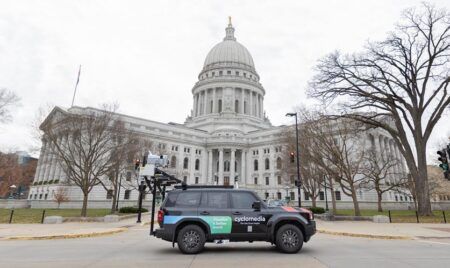Highways England (HE) is trialing an innovative and environmentally-friendly method of resurfacing roads that will mean smoother and safer journeys for drivers in the North East, while saving the agency both time and money.
HE’s contractor, A-one+, is using pioneering technology to resurface just over a mile of the A1 major trunk road at Brownieside in Northumberland. The machinery, being used for the first time in the UK, allows the underlying layers of the pavement to be recycled, churning up the old surface material, combining it with new material within the body of the machine, then laying it back down immediately on the road behind. The new technology means that up to 1,000 tonnes per hour can be resurfaced, compared to an average of 100 tonnes per hour using conventional methods. As well as being able to resurface larger areas, there is also a 75% reduction in the amount of quarried stone used on the job, a 66% reduction in the amount of waste taken to landfill, and 70% fewer truck trips to and from site.
Currently, to resurface a road, the old pavement surface is planed off and taken away on a fleet of trucks as waste. The new material, which is often mixed off site, is brought in hot and is laid using a resurfacing machine. This is usually in truckloads of 20 tonnes, with an average of 350 tonnes per shift being brought in altogether, requiring at least 17 truck deliveries to the site. Work started at the Brownieside pilot site on August 2, where both lanes on the southbound carriageway are being resurfaced. The project is expected to take three weeks and the trials will be carried out during the day. Temporary barriers are in place on the northbound carriageway of the A1 for the duration of the project to allow drivers to travel in both directions using a contraflow arrangement.
“This new technology is brilliant news for the thousands of drivers that use motorways and major A roads in the North East, who will benefit from smoother and safer journeys,” commented HE’s project manager, Steve Bishop. “There are lots of benefits to using this new way of working. It means we can resurface larger areas of road, there are fewer construction vehicle trips, and the road surface is designed to last for at least 10 years, meaning that we shouldn’t need to go back to carry out further repairs any time soon, meaning less disruption for drivers. This is the first machine of its type in the UK, but the process is already successfully used in the USA, France and China. We are always working with our partners to trial new technologies that will help us to minimize disruption to drivers while we carry out essential road maintenance.”




